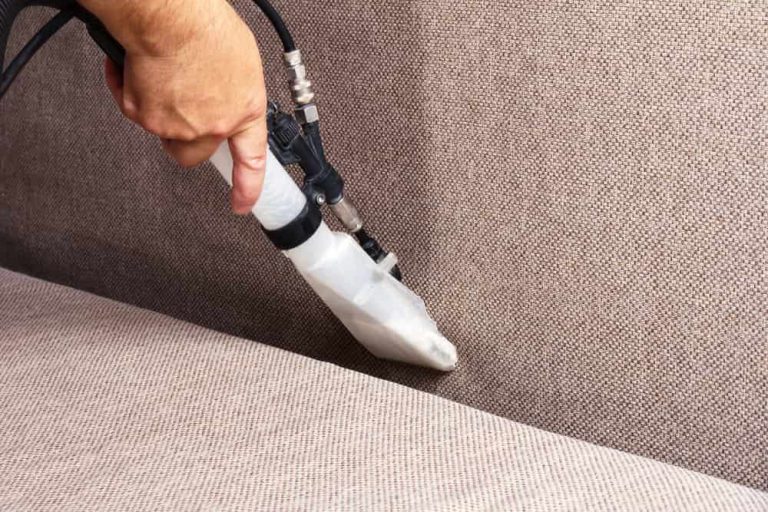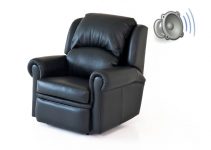We all enjoy the time sitting in our comfortable and cozy recliner after a long day of hard work. However, this lovely piece of furniture can attract dirt and debris with time, our kids, pets, or even ourselves will leave stains on it as well.
We need to clean a recliner from time to time, but how? Different types of recliners have different cleaning methods and there is no one-size-fits-all solution.
We will show you how to do it step by step in this post. Regardless of what the types of recliners are, we have got you covered.
Contents
General cleaning tips
To make our recliner last longer, we should clean it regularly. It is not all about removing stains on the upholstery. Eliminating the dust in the mechanism, and cleaning up the dust and crumbs in the seams are crucial steps in the cleaning regimen as well.
Before cleaning any recliner chair, read the cleaning code on the tag and use the proper cleanser. Always test it on an out-of-the-way place to prevent any irreparable damage to your chair.
If there are any stains on the upholstery, clean it as soon as possible. The new stains are often much easier to remove than the old ones.
In most cases, you need to apply the cleanser to the cloth and then use the cloth to clean the chair. Occasionally, you can spray the solvent-based cleanser on the fabric directly.
The building-up dust could affect the performance of parts underneath, therefore, flipping over the chair and cleaning up the framework is something that should not be ignored. This applies to all types of recliners.
How to clean a leather recliner
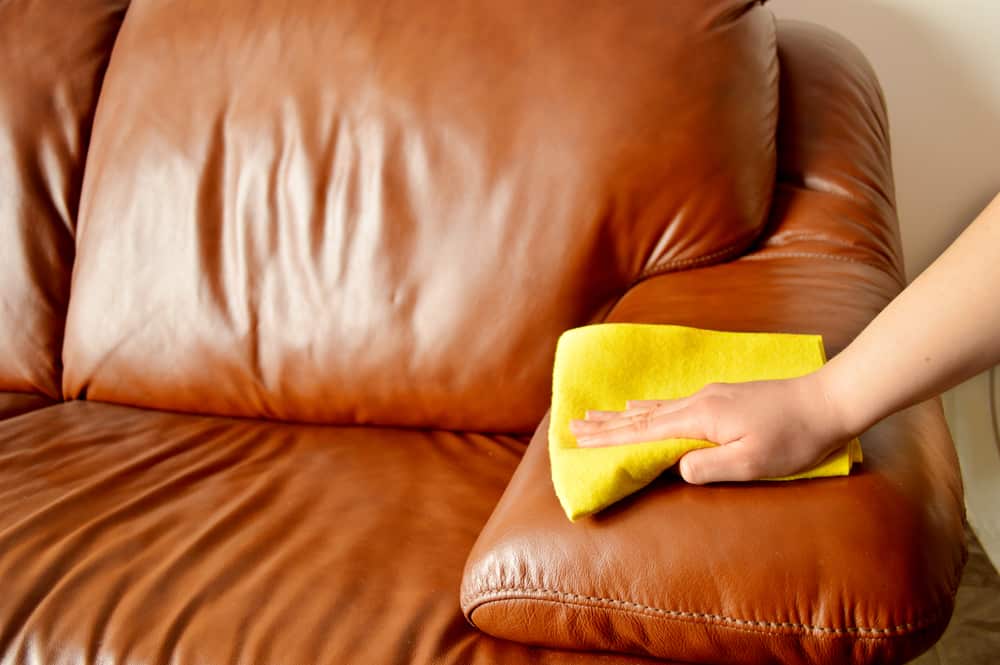
The leather recliner looks more luxurious and often easier to maintain. As they are not porous, fewer stains will be left.
At first, use the vacuum to take away the dust. Don’t forget those crevices where the specks of dirt often accumulate. If a vacuum cleaner is not available, you can use a soft and absorbent cloth instead. The wet cloth also works on removing the stains and spills.
To clean it more thoroughly or some stains can’t be removed by water, mix the mild household cleaner with diluted water. The tap water contains chlorine which could damage the leather in the long run.
Dip a soft cloth into the solution and use this cloth to clean an invisible part of the chair. Wait a moment to see if this solution leads to any damage to your chair.
If not, apply this solution to the whole chair. Use a dampened cloth to blot the solution residues and let them dry.
To remove the stubborn grease stain, there is a homemade paste proven to be effective: 1/8 cup sea salt, 1/2 teaspoon white flour and 1 tablespoon of baking soda, and 3/8 cup distilled water. Dip a microfiber cloth into the paste and apply it to the grease spot.
The last step of cleaning a leather chair is to apply a bit of olive oil to make the chair in a good condition.
Check here to know more details about cleaning a leather chair.
How to clean a suede recliner
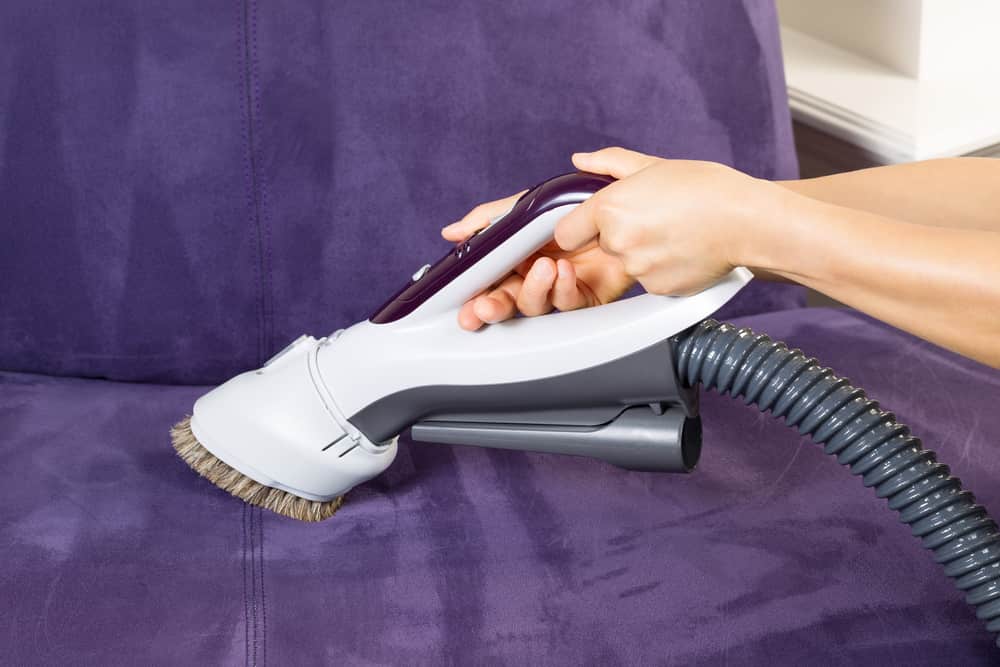
The suede recliner is a bit hard to clean as the material is delicate. There are a few tools designed to help you deal with it.
Use a plastic spoon or a suede brush to remove old stains and dirt and then vacuum the surface of the chair.
If there still has some grease stains, cover it with some cornstarch and vacuum it the next day. For other stains, you should buy a bottle of suede cleaner or mix some middle detergent with diluted water until you start to see suds.
Use a soft cloth or sponge to pick up the suds and apply them to the stains. When the stains are blotted out, use a damp cloth to take away residues and a dry cloth to let it dry.
How to clean a faux leather recliner
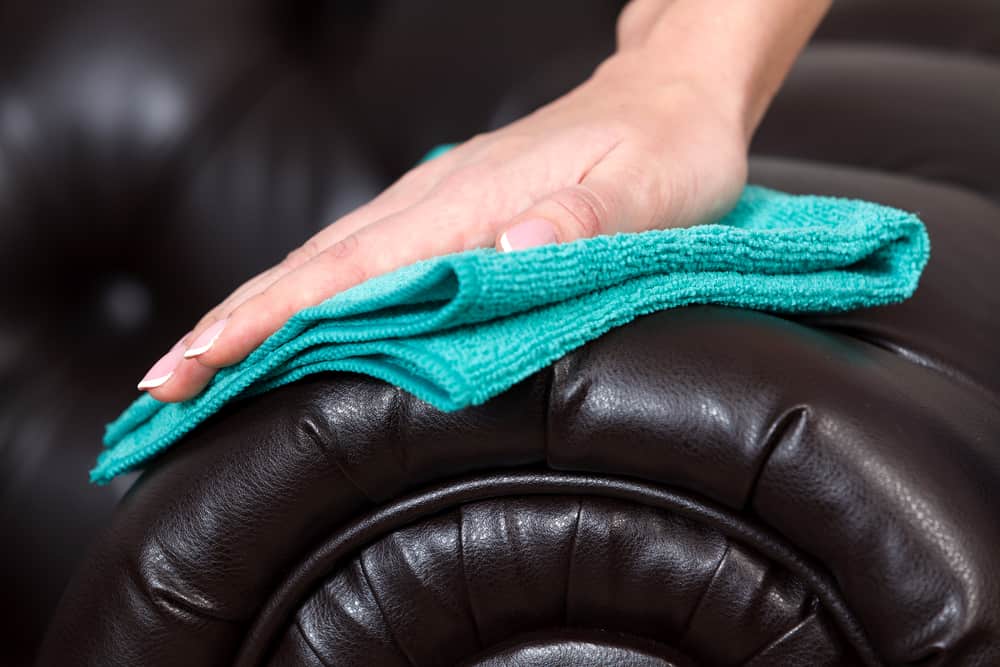
People like faux leathers since they are cost-effective and animal-friendly. As usual, start with vacuuming and then use a soft cloth to remove the stains.
Some people like to use a mixture of water and mild detergent and others prefer to use a mixture of vinegar and water. They are all good but you have to test them before applying them to the surfaces still.
Once the stains are gone, remember to remove the extra solution with a cloth and let it dry.
The same as maintaining a genuine leather recliner, you should polish it at last.
How to clean a fabric recliner
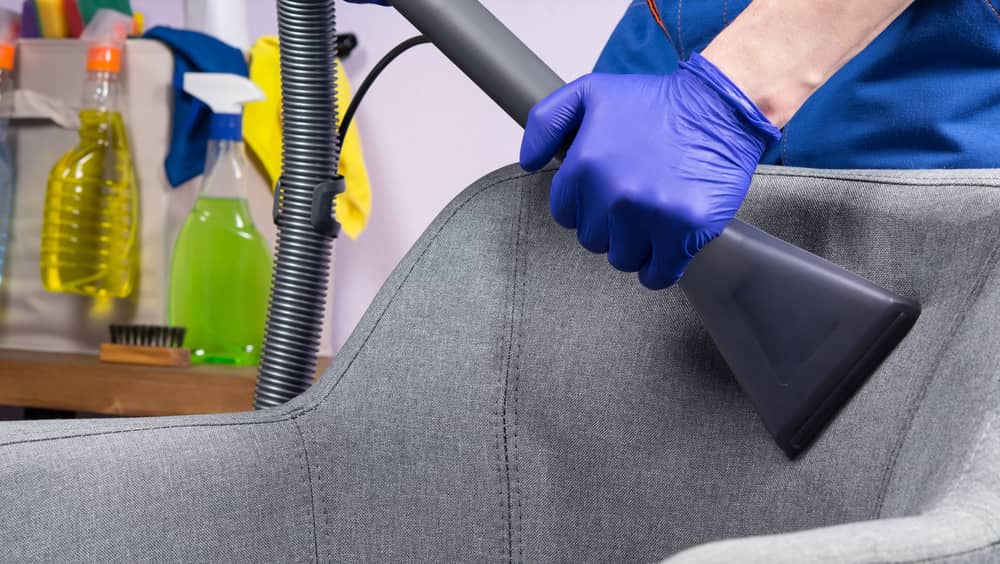
There are various kinds of fabric and we should treat them differently. That’s why some fabric recliners need to be taken care of by a solvent-based cleaner and others are compatible with water-based cleaners.
Some fabric recliners come with an “S/W” cleaning code meaning that you should apply different cleaners according to the types of stains. However, if the chair is tagged with “X”, you’d better look for professional services.
To deal with a fabric recliner, the first step is to use a stiff-bristled brush to remove all the caked-on stains. After that, vacuum the chair to take away all the debris and dander.
Buy a fabric upholstery cleaner or use a homemade vinegar-water mixture. To avoid damage, test it on a part that is invisible. If the solvent-based cleaner is applicable, spray it on the chair and remove the stain with a sponge or cloth.
Allow it to air dry and you could enjoy an almost-new chair.
How to clean a microfiber recliner
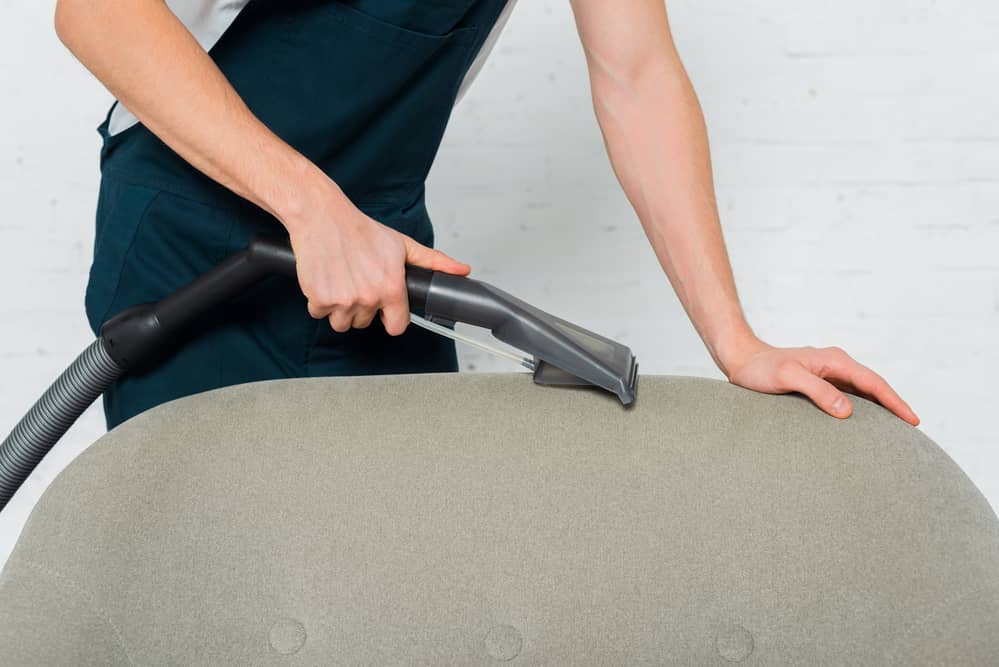
Microfiber recliners are soft and resistant to dust. Nevertheless, they are not resistant to all kinds of stains.
Like cleaning other recliners, you should use the vacuum cleaner to take away all the particles and use a brush to clean up the caked-on stains.
To remove the remaining stains, you can opt for a microfiber cleaner or use a paste that consists of vinegar, water, and dish soap. Dip a cloth into the paste and blot the stains one by one.
Some microfiber chairs need a solvent-based cleaner. Spray the cleaner onto one area of the chair and use a sponge or cloth to blot out the stains. Remember to re-fluff the microfiber when it is dry.
We covered more details about how to clean a microfiber recliner here.
How to clean the recliner headrest
The headrest could be the most difficult place to clean in a recliner. This is due to the fact that we often leave our hair oils on it and grease stains are typically hard to remove.
To solve this problem, you can cover a layer of cornstarch on the stains and brush it off the next day. Or use a vacuum cleaner to remove the residues.
To further clean the chair, use a suitable cleaner or a homemade solution like cleaning other parts of your chair.
How often should you clean your recliner?
The cleaning frequency for each part of the recliner varies. For example, you should vacuum the upholstery every week and remove the dust in the mechanism at least once a year.
For maintaining a leather recliner, use a specific leather care product to clean and polish it once a month. For fabric chairs, do a deep clean at least bi-annually.
No matter what type of recliner chair you have, remember to remove the stains as soon as possible. If you live with kids and pets, you may need to increase the frequency.
How to make cleaning easier?
Not everybody likes doing cleaning jobs. So how to make cleaning a recliner easier? The most straightforward solution may be the recliner cover. By creating a physical barrier between the upholstery and users, almost no stains will leave on the upholstery anymore.
In general, recliner covers are cheap and you can buy a new one anytime you find the stains are hard to fade.
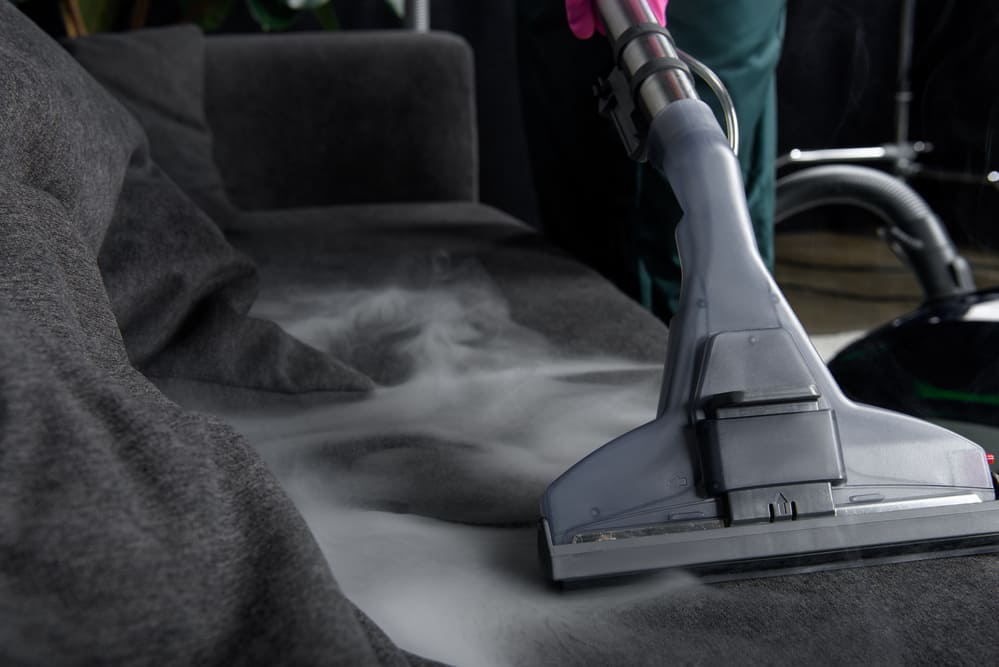
Some families choose to buy steam cleaner these days. With the help of it, the stains and marks on the upholstery would be easier to deal with.
Wrapping up
In this post, we showed you how to clean different types of recliners. It may seem like a daunting task initially but you can finish it with some patience.
Don’t forget to check the cleaning code and test the solution before applying it to the visible area. Your chair would last longer and remain beautiful as long as you clean it regularly.

